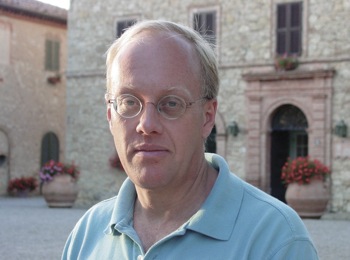The city's crumbling infrastructure, hundreds of gutted and abandoned buildings, empty factories, vacant warehouses and impoverished neighborhoods replicate the ruins of other post-industrial American cities, the classic signposts of a civilization in terminal decline.
"Just as in the past, countries that are environmentally stressed, overpopulated, or both, become at risk of getting politically stressed, and of their governments collapsing," Jared Diamond argues in 'Collapse How Societies Choose to Fall or Succeed'.
"When people are desperate, undernourished and without hope, they blame their governments, which they see as responsible for or unable to solve their problems. They try to emigrate at any cost. They fight each other over land. They kill each other. They start civil wars. They figure that they have nothing to lose, so they become terrorists, or they support or tolerate terrorism."
Pre-industrial civilizations were dependent on the limits of solar energy and constrained by roads and waterways, impediments that were obliterated when fossil fuel became an energy source. As industrial empires became global, their increase in size meant an increase in complexity. Ironically, this complexity makes us more vulnerable to catastrophic collapse, not less.
Soaring temperatures - Iraq is enduring 120 degree heat that has fried the country's electrical grid - the depletion of natural resources, flooding, droughts - the worst drought in 500 years is devastating Western, Central, and Southern Europe, and is expected to see a decline in crop yields of 8 or 9 percent - power outages, wars, pandemics, a rise in zoonotic diseases, and breakdowns in supply chains, combine to shake the foundations of industrial society.
The Arctic has been heating up four times faster than the global average, resulting in an accelerated melting of the Greenland ice sheet and freakish weather patterns. The Barents Sea north of Norway and Russia are warming up to seven times faster. Climate scientists did not expect this extreme weather until 2050.
"Each time history repeats itself, the price goes up," the anthropologist Ronald Wright warns, calling industrial society "a suicide machine."
In 'A Short History of Progress', he writes:
"Civilization is an experiment, a very recent way of life in the human career, and it has a habit of walking into what I am calling progress traps. A small village on good land beside a river is a good idea; but when the village grows into a city and paves over the good land, it becomes a bad idea . While prevention might have been easy, a cure may be impossible: a city isn't easily moved. This human inability to foresee " or to watch out for " long-range consequences may be inherent to our kind, shaped by the millions of years when we lived from hand to mouth by hunting and gathering. It may also be little more than a mix of inertia, greed, and foolishness encouraged by the shape of the social pyramid. The concentration of power at the top of large-scale societies gives the elite a vested interest in the status quo; they continue to prosper in darkening times long after the environment and general populace begin to suffer."
Wright also reflects upon what will be left behind:
"The archaeologists who dig us up will need to wear hazmat suits. Humankind will leave a telltale layer in the fossil record composed of everything we produce, from mounds of chicken bones, wet-wipes, tires, mattresses and other household waste to metals, concrete, plastics, industrial chemicals, and the nuclear residue of power plants and weaponry. We are cheating our children, handing them tawdry luxuries and addictive gadgets while we take away what's left of the wealth, wonder and possibility of the pristine Earth.
Calculations of humanity's footprint suggest we have been in 'ecological deficit,' taking more than Earth's biological systems can withstand, for at least 30 years. Topsoil is being lost far faster than nature can replenish it; 30 percent of arable land has been exhausted since the mid-20th century.
We have financed this monstrous debt by colonizing both past and future, drawing energy, chemical fertilizer and pesticides from the planet's fossil carbon, and throwing the consequences onto coming generations of our species and all others. Some of those species have already been bankrupted: they are extinct. Others will follow."
As Cahokia declined, violence dramatically increased. Surrounding towns were burned to the ground. Groups, numbering in the hundreds, were slaughtered and buried in mass graves. At the end, "the enemy killed all people indiscriminately. The intent was not merely prestige, but an early form of ethnic cleansing" writes anthropologist Timothy R. Pauketat, in 'Ancient Cahokia and the Mississippians'.
He notes that, in one 15th-century cemetery in central Illinois, one-third of all adults had been killed by blows to the head, arrow wounds or scalping. Many showed evidence of fractures on their arms from vain attempts to fight off their attackers.
Such descent into internecine violence is compounded by a weakened and discredited central authority. In the later stages of Cahokia, the ruling class surrounded themselves with fortified wooden stockades, including a two-mile long wall that enclosed Monks Mound. Similar fortifications dotted the vast territory the Cahokia controlled, segregating gated communities where the wealthy and powerful, protected by armed guards, sought safety from the increasing lawlessness and hoarded dwindling food supplies and resources.
(Note: You can view every article as one long page if you sign up as an Advocate Member, or higher).





